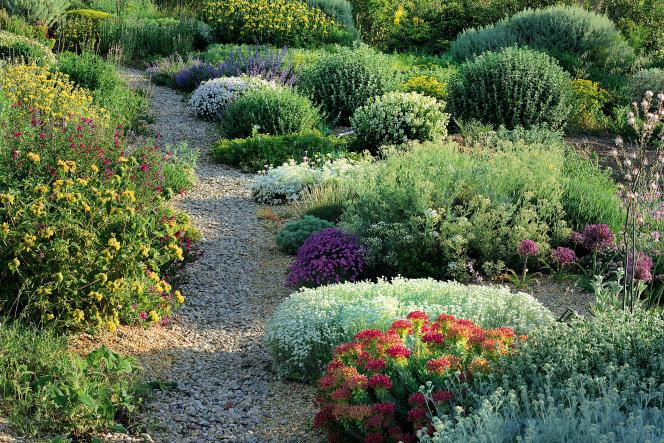
“The lawn is ecological nonsense”: what if we finally put away mowers, fertilizers and pesticides?
It comes suddenly, without warning, listening to the morning “tchic-tchic” of the automatic watering system or while the lawn is being drowned, hose in hand. This vague feeling of uneasiness tinged with guilt in the face of the lawn sown, rolled, fed with organic fertilizer, mowed, scarified, sown again, tirelessly watered but not very beautiful, in the end. Not wanting to admit it but we have a feeling: an era is over that symbolized the impeccable green carpet.
Suburban life unfolded on the lawn, between the squared hedges and the rosebushes in flowerbeds. The noisy mowing on Saturday, the barbecue on Sunday, football involving the children, the gazes of the neighbors gauging the moral qualities of the gardener, down to the dandelion, from the height of the blade of grass. The "glorious thirty" smelled of mowed grass, on the neat model of American suburban housing estates. The grass carpet extended that of the living room. Wielding clippers and chemistry, the father of the family offered the reassuring comfort of a domesticated nature.
A plot of grass without cultivation, therefore not nourishing: in the Middle Ages, only monks, lords and kings could afford this luxury. The first lawns grow around castles and stately homes. Having become signs of social distinction, they designed the complex French-style gardens at the end of the 17th century. For Louis XIV, it is from a vast rectangle of grass (then called “green carpet”) that Le Nôtre underlines the perspective of the Grand Canal, in the park of Versailles.
The English elite of the 18th century prided themselves on recreating romantic pastoral landscapes in the garden, then copied by American aristocrats. The industrial revolution brought manual and then motorized lawn mowers (1919), which were hugely successful from the 1960s, as well as chemical fertilizers and weedkillers. Starting in Europe, the turf returns there, activating the social rise of the suburban middle classes under American influence. But in Canada, an anti-turf rebellion was born, which spread throughout North America in the 1970s: stop social pressure, long live the Freedown lawn, the grass of freedom, disheveled and without chemical inputs!

The millennium has changed but turf cultivation has beautiful remnants. In our country, the 12 million gardens with lawns have given rise to a market (seeds, tools, products, etc.) of nearly one billion euros, "including 82 million for grass seeds intended for individuals, which are in full boom”, assesses Jean-Marc Lecourt, president of the association Société française des gazons. We would even border on “European shortage”, according to Semae, interprofession of seeds and seedlings. At Gamm vert and Jardiland, garden centers of the InVivo group, the spring of 2021, on the grass seed side, was even more flourishing than that of 2019 (last possible comparison), supports Carole Fischel, who heads the plant sector there: “Investments for the garden grew. However, the lawn remains an important element of its constitution. » The first reflex of the home buyer who does not really know what to plant on his long-awaited piece of land.
How to Build a Plastic Model Airplane from a Kit - http://t.co/2vIwVJTj
— Modelismo online Sun Dec 23 12:51:32 +0000 2012
Carpet or cow grass
Green in cardboard box. Landscapers sow it all the way every spring, although fall is more appropriate. “There is still work to do to accept something other than a uniform lawn, especially for those over 40, sighs Olivier Planchenault, who practices in Champigné (Maine-et-Loire). Initially, customers all say they are not expecting a golf green. But as soon as weeds appear in the spring, they come back to me: “There are still weeds… How are you going to proceed?” Clover, dandelion, daisy, it's cow grass, they paid for the lawn, the one we mow on Friday before the arrival of the guests. For its flashy side. They get on all fours to look for the clover, they are obsessed with the notion of “clean”. »
You have 78.86% of this article left to read. The following is for subscribers only.







